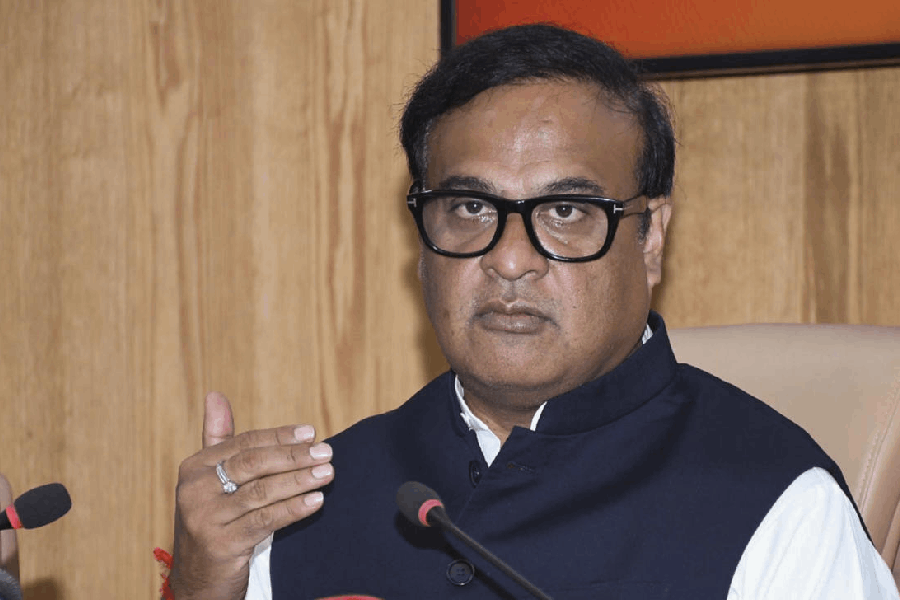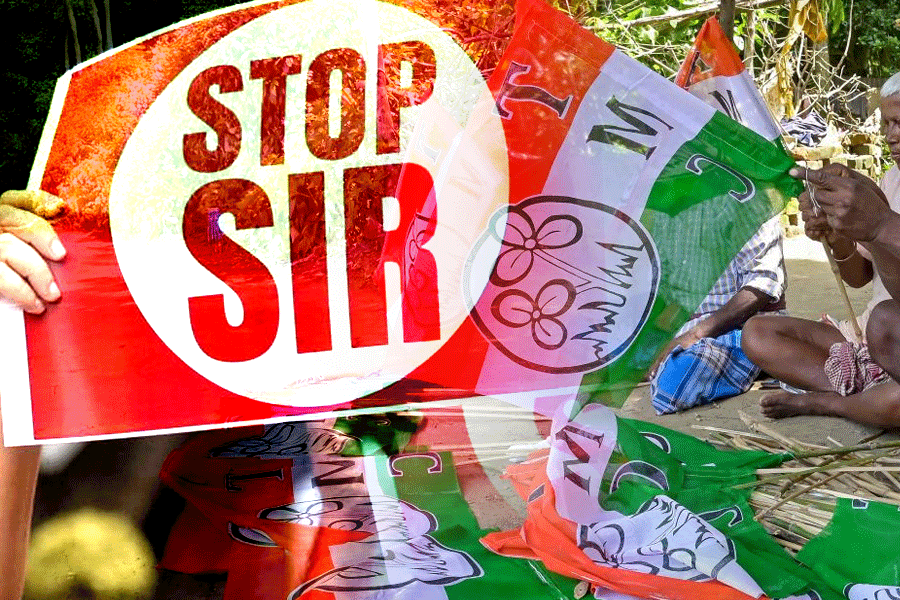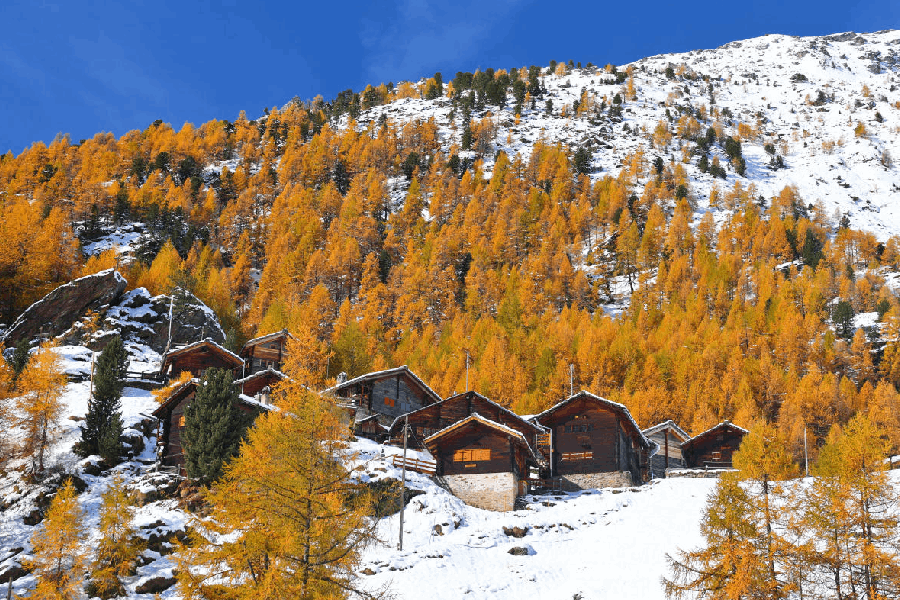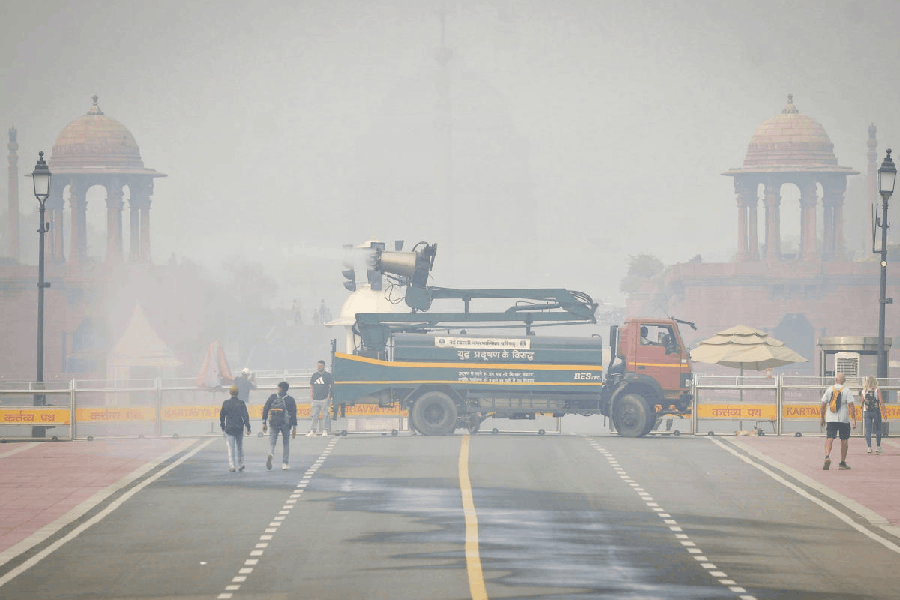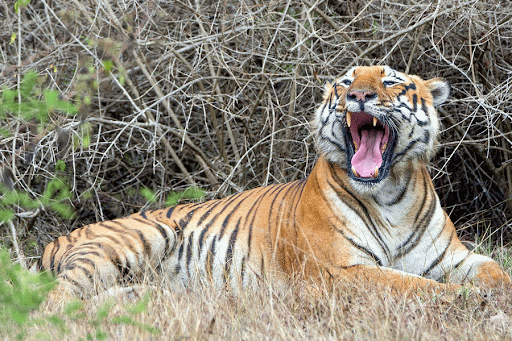|
|
| Family values |
The bubbly and vivacious Congress minister from Tamil Nadu, Mani Shankar Aiyar, may have to recharge his verbal dynamo and even shore-up his political arsenal next time he visits his home turf, Mayiladuthurai. All this for a reason the charismatic civil servant-turned politician would have hardly expected. Activists of the Dalit Panthers of India were on a rampage, burning down Aiyar’s effigies, after reports that the Sri Lankan president, Mahinda Rajapakse — denounced rabidly in Tamil Nadu — had been spotted at the wedding of Aiyar’s daughter in the national capital. Rajapakse was in New Delhi en route to Dehra Dun for the first Asian mayors’ conference.
The news was enough to inflame passions in Aiyar’s home state. Stridently pro-Tamil parties like the DPI have dubbed Aiyar’s minimal hospitality at the ceremony in his house an unforgivably anti-Tamil act. This came rather abruptly for Aiyar when Tamil Nadu and Kerala were locked in a dispute over the raising of the water level in the Mullaiperiyar dam. This followed the Supreme Court’s upholding of Tamil Nadu’s claim to increase the storage level from the present 136 feet to 142 feet. The impasse had already fanned chauvinistic feelings in Tamil Nadu’s southern districts, which depend on the dam for irrigation.
The sentiment is now being blared from rooftops in a virtual quasi-Tamil revivalism in the state. It is a pile up of strong pro-Tamil sentiments on a plethora of issues, from the Sri Lankan Tamil crisis, M. Karunanidhi’s feverish attempt to make Tamil the sole official language of the Madras high court, to the recent objections voiced by some Hindu political outfits to installation of Periyar’s statue by Dravidar Kazhagam’s K.Veeramani right in front of the imposing tower of the ancient Vishnu temple in Srirangam near Tiruchirappalli.
The defiling of Periyar’s statue in Srirangam by activists of the Hindu Makkal Katchi two days before it was to be unveiled by Veeramani, led to violent counter-attacks by Dravidar Kazhagam sympathizers in several parts of Tamil Nadu. They uprooted and broke images in temples, some even cutting off the sacred thread of Brahmin priests. The uproar culminated in a petrol bomb attack on the Ayodhya Mandapam in south Chennai, a popular congregational and religious discourse centre. It was a virtual throwback to the heyday of the Dravidar Kazhagam’s anti-Brahmanism through symbolic but unambiguous assertion of the Tamil/ Dravidian identity.
Come what may, Veeramani is determined to unveil a new Periyar statue in bronze this time at that very place and soon. It had got the Srirangam municipality’s nod years back, disregarding the public religious sentiments. Many feel that a statue of an atheist leader like Periyar close to the majestic 235-feet tall temple tower does not jell with the ambience of a shrine, which is sacred to millions of religious believers and which has been declared a heritage site by the Unesco. The footprints of the famous Bengal mystic, Chaitanya, who visited Srirangam once, are also preserved in stone near the entrance to the huge temple.
Notwithstanding the complex sensitivities involved in each one of these issues, the key political message that rings through these episodes seems quite evident. Karunanidhi, the chief minister for the fifth time, is eulogized by various pro-Tamil outfits — including the OBC Vanniyar-dominated Pattali Makkal Katchi, which calls him Vaazhum Periyar or the Living Periyar. He is apparently carrying forward the ‘Dravidian’ ideology’s mantle to its logical end, including allowing people of all castes to become priests in Hindu temples. But this is a classic case of politics masquerading as culture projects. In the overarching political discourse of contemporary Tamil Nadu, all this is sought to be legitimized in terms of ‘social justice’ for the oppressed and depressed classes, which is ironically restricted to fighting the perceived ‘Brahmin hegemony’, a legacy of the Thirties and Forties, when Brahmins were marginalized in the state.
While the deep-rooted ‘non-Brahmin ideology’ continues to be the defining paradigm of political dialogue, advancing it in the language of Tamil or Dravidian cultural purity now seems the only form of political correctness in Tamil Nadu. It stifles, and at times even chokes, other ways of looking at issues, including that of Tamil identity.
To cite an instance, even when the state assembly recently adopted a resolution urging the president of India to give his consent to making Tamil the official language of the Madras high court, a senior Dravida Munnetra Kazhagam minister argued that the move was to ensure “social justice” to the other backward classes and Dalit lawyers, who could henceforth present their cases in Tamil. Many of them had shied away from the high court for want of adequate English-speaking abilities, he reasoned.
“What is wrong in talking to the Sri Lankan president when he visits India,” asked a vociferous Congress MLA, Hussain Ali, whose constituency of Ramanathapuram now bears the maximum brunt of the Sri Lankan Tamil refugees fleeing the island following the escalation of violence there . “How else can we discuss problems and try to solve them?” he angrily posed to the Tamil hawks in his state who protested against New Delhi rolling out the red carpet to Rajapakse.
Karunanidhi may be comfortable with the adulatory pro-Tamil wave all around him — the PMK president, G.K. Mani, went to the extent of saying that the Sri Lankan Tamil issue could only be resolved during Karunanidhi’s lifetime — as it carves him out as an authentic ‘Dravidian’. That the DMK chief is playing to the starry-eyed Tamil gallery is an indication that the re-fashioning and sustenance of a ‘homogenized non-Brahmin identity’, amid the forces of economic globalization, is no longer a task as easy as it was during Periyar’s time.
And this is the biggest challenge facing Tamil Nadu’s Dravidian parties, which are still unable to come to terms with the imminent reconfiguration of regional politics itself. With the Congress sharing power with the DMK at the Centre as part of the United Progressive Alliance government, it is a moot point whether Tamil Nadu Congressmen see the writing on the wall. They should try doing it before other political outfits, like that of actor Vijayakant, or the communal parties pick up as much as they can when the state’s polity is up for grabs.



